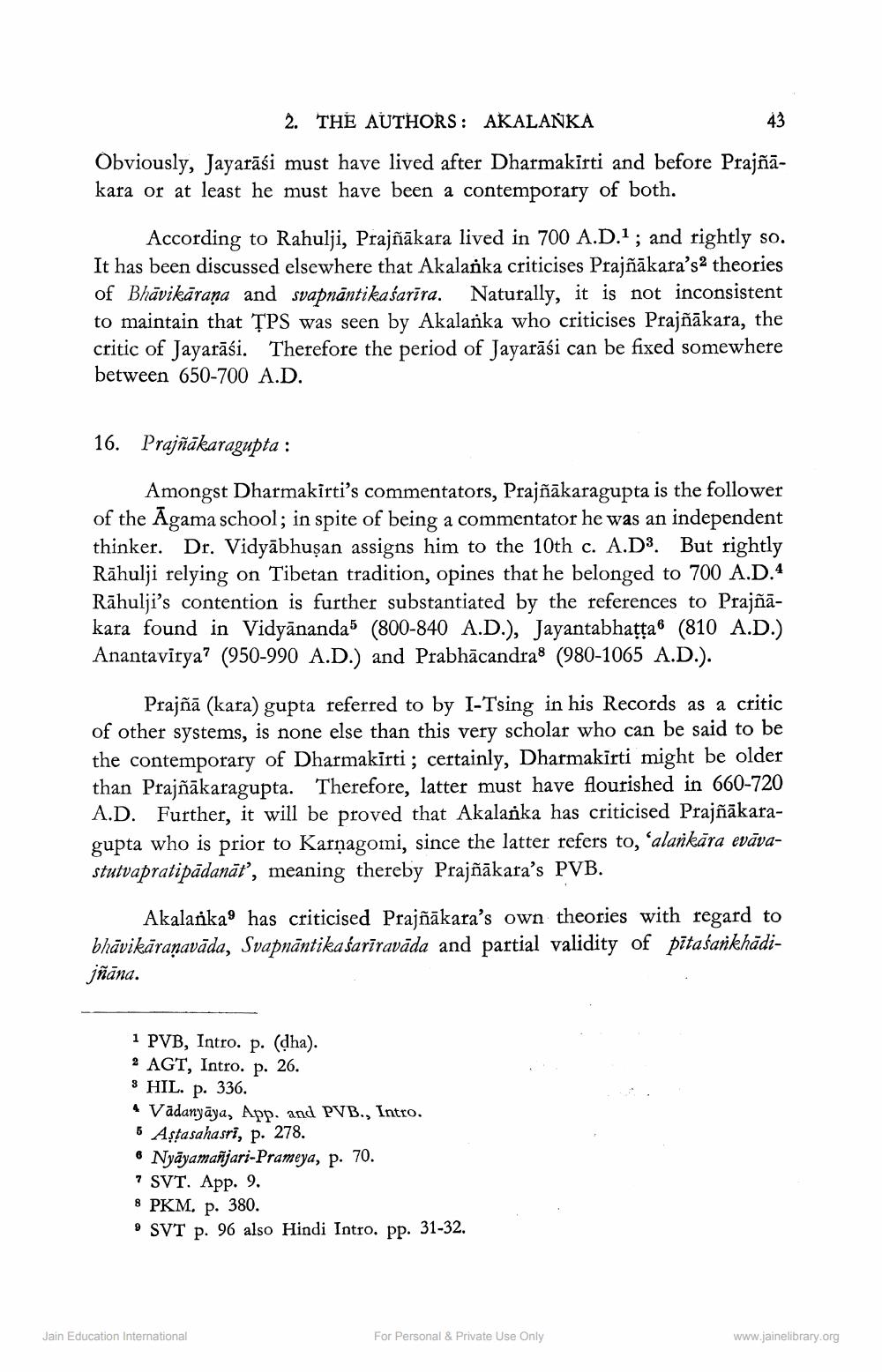________________
2. THE AUTHORS: AKALANKA
Obviously, Jayarāśi must have lived after Dharmakirti and before Prajñākara or at least he must have been a contemporary of both.
According to Rahulji, Prajñākara lived in 700 A.D.1; and rightly so. It has been discussed elsewhere that Akalanka criticises Prajñākara'sa theories of Bhävikārana and svapnantikaśarīra. Naturally, it is not inconsistent to maintain that TPS was seen by Akalanka who criticises Prajñākara, the critic of Jayarāśi. Therefore the period of Jayarāśi can be fixed somewhere between 650-700 A.D.
16.
Prajmakaragupta :
Amongst Dharmakirti's commentators, Prajñākaragupta is the follower of the Agama school; in spite of being a commentator he was an independent thinker. Dr. Vidyābhuşan assigns him to the 10th c. A.D3. But rightly Rāhulji relying on Tibetan tradition, opines that he belonged to 700 A.D.4 Rāhulji's contention is further substantiated by the references to Prajñākara found in Vidyānanda5 (800-840 A.D.), Jayantabhatta6 (810 A.D.) Anantavirya? (950-990 A.D.) and Prabhäcandra8 (980-1065 A.D.).
Prajñā (kara) gupta referred to by I-Tsing in his Records as a critic of other systems, is none else than this very scholar who can be said to be the contemporary of Dharmakīrti ; certainly, Dharmakirti might be older than Prajñākaragupta. Therefore, latter must have flourished in 660-720 A.D. Further, it will be proved that Akalarka has criticised Prajñākaragupta who is prior to Karnagomi, since the latter refers to, “alankāra evāvastutvapratipādanāt, meaning thereby Prajñākara's PVB.
Akalarika! has criticised Prajñākara's own theories with regard to bhāvikāranavāda, Svapnāntikaśarīravāda and partial validity of pitašarkhādijñāna.
1 PVB, Intro. p. (dha). 2 AGT, Intro. p. 26. 8 HIL. p. 336. 4 Vadanyāya, App. and PVB, Intro. 5 Astasahasri, p. 278. * Nyāyamañjari-Prameya, p. 70. 7 SVT. App. 9. 8 PKM, p. 380. 9 SVT p. 96 also Hindi Intro. pp. 31-32.
Jain Education International
For Personal & Private Use Only
www.jainelibrary.org




